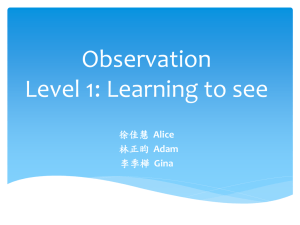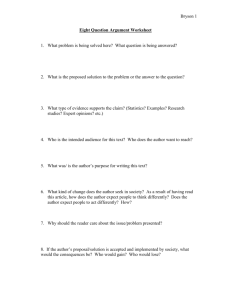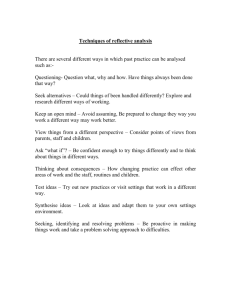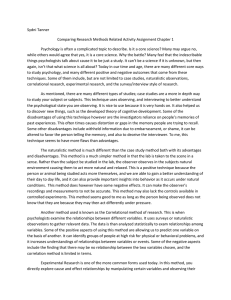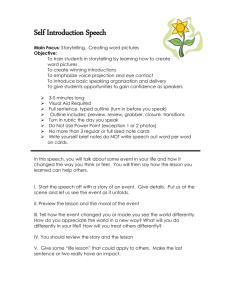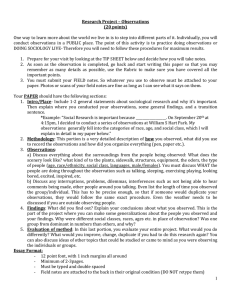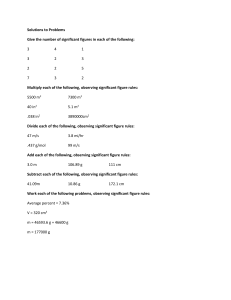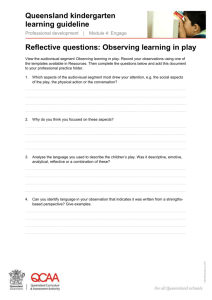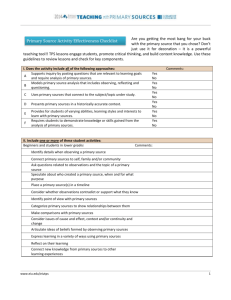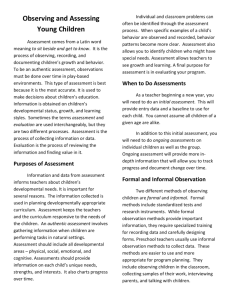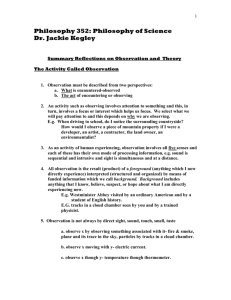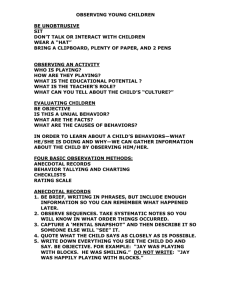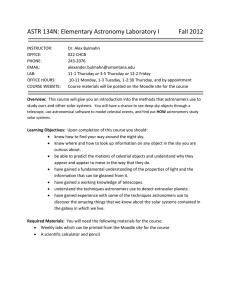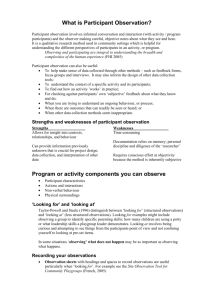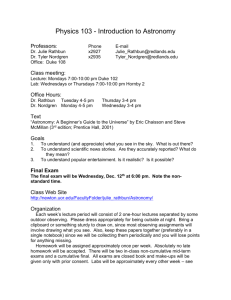Observation in a Public Place
advertisement
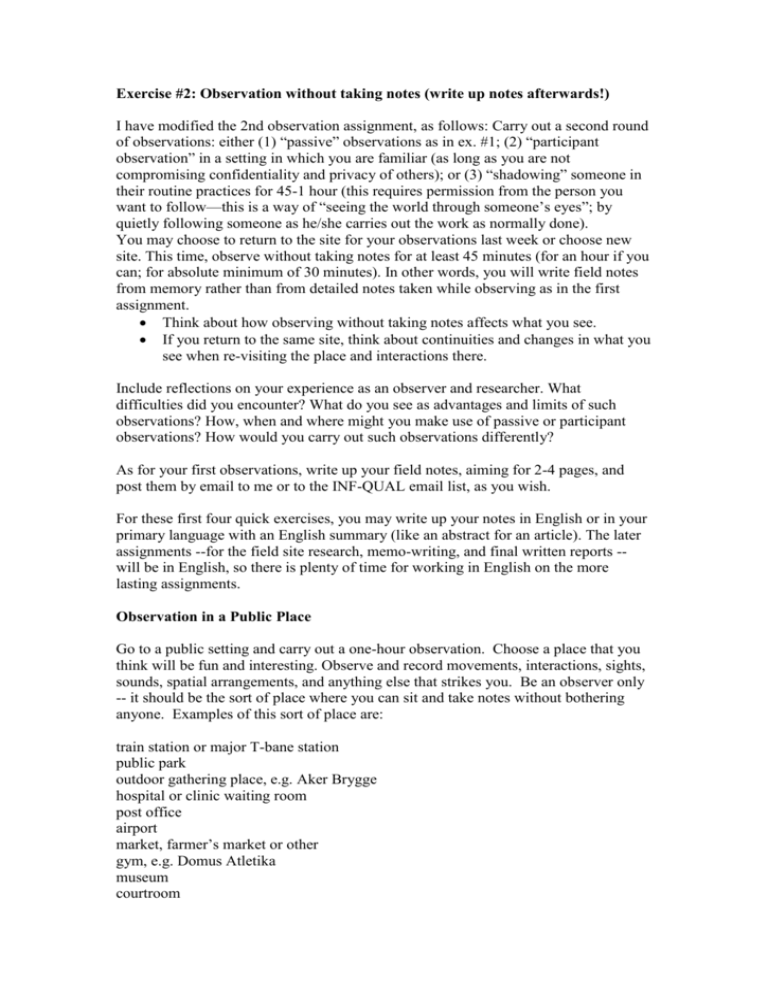
Exercise #2: Observation without taking notes (write up notes afterwards!) I have modified the 2nd observation assignment, as follows: Carry out a second round of observations: either (1) “passive” observations as in ex. #1; (2) “participant observation” in a setting in which you are familiar (as long as you are not compromising confidentiality and privacy of others); or (3) “shadowing” someone in their routine practices for 45-1 hour (this requires permission from the person you want to follow—this is a way of “seeing the world through someone’s eyes”; by quietly following someone as he/she carries out the work as normally done). You may choose to return to the site for your observations last week or choose new site. This time, observe without taking notes for at least 45 minutes (for an hour if you can; for absolute minimum of 30 minutes). In other words, you will write field notes from memory rather than from detailed notes taken while observing as in the first assignment. Think about how observing without taking notes affects what you see. If you return to the same site, think about continuities and changes in what you see when re-visiting the place and interactions there. Include reflections on your experience as an observer and researcher. What difficulties did you encounter? What do you see as advantages and limits of such observations? How, when and where might you make use of passive or participant observations? How would you carry out such observations differently? As for your first observations, write up your field notes, aiming for 2-4 pages, and post them by email to me or to the INF-QUAL email list, as you wish. For these first four quick exercises, you may write up your notes in English or in your primary language with an English summary (like an abstract for an article). The later assignments --for the field site research, memo-writing, and final written reports -will be in English, so there is plenty of time for working in English on the more lasting assignments. Observation in a Public Place Go to a public setting and carry out a one-hour observation. Choose a place that you think will be fun and interesting. Observe and record movements, interactions, sights, sounds, spatial arrangements, and anything else that strikes you. Be an observer only -- it should be the sort of place where you can sit and take notes without bothering anyone. Examples of this sort of place are: train station or major T-bane station public park outdoor gathering place, e.g. Aker Brygge hospital or clinic waiting room post office airport market, farmer’s market or other gym, e.g. Domus Atletika museum courtroom café, cantina, fast food restaurant bar, nightclub computer center Describe as much as you can about the setting. Jot down your observations on the spot, then write up longer versions immediately afterward. Do not interview anyone. If someone asks you what you are doing, tell them that it’s an assignment in a course about field research. You should spend at least twice as long writing up fieldnotes as you did observing, perhaps longer. You will be surprised at the amount of detail you can record in one hour! Your field notes should be at least 3-4 typed pages and should include your name; the type of setting and the date and time of your observations; why you chose this setting; a rough map and detailed description of the setting (a verbal "snapshot"); a description of what you saw; and finally, your interpretations of what you saw. The description should be who, what, when, where -- and perhaps why, although be careful about too detailed explanations of motivations. Conclude with a brief interpretation about at least one organizing principle of the setting. What patterns do you see? What deviations from the general order to you see? Are some people acting differently or being treated differently than others?
